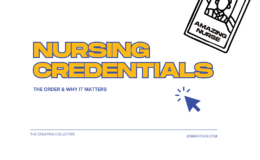The Article: Dickson, K., Cramer, A., & Peckham, C. (2010). Nursing workload measurement in ambulatory care. Nursing Economics, 28(1): 37-43.
Big Idea: Acute care nursing has a well-documented history of measuring patient acuity and workload to adjust staffing mix. However, those tools are not easily adapted to the ambulatory care setting; thus, measuring nursing workload within outpatient clinics that care for different patients daily, over-schedule appointments, and expect daily appointment cancellations remains a challenge. This article follows one system’s process to review the ambulatory nursing workload measurement data, create their own measurement system – the Workload Measurement and Reporting System (WMRS) – pilot the tool, and evaluate those efforts.
Survey Says!: The WMRS did prove to capture valuable workload data to influence ambulatory care staffing levels. Imaginably so, this process was long yet bridged an administrative gap. As with most tools, the WMRS is only as good as the nurse’s understanding of the importance of using the tool correctly and adequately entering workload data. The beauty of the WMRS is that in addition to capturing visit-specific work, it also captures non-visit related work, which most nurses know is substantial (i.e. finding charts, entering information, referring, etc.).
Quotable: “Since actual effort is measured, leadership can analyze workload data at any point in time to determine the true impact practice, technology, and other changes have on nurse workload” (p. 40).
“The pilots also exposed the importance of educating nursing staff on the value of workload data to the practice. As clinicians increased their understanding of the need for and value of workload data, their commitment to and compliance with entering workload into the WMRS application improved” (p. 42).
So What?: Ambulatory care nurses interested in measuring workload to impact staffing levels should inquire more about the WMRS as it captures both visit and non-visit workload, giving a more comprehensive picture of the entire clinic’s workload. Study authors mention the tool is under revision to include linkages to the outpatient EMR and make it easier for nurses to input workload data. Once that is complete, the project team plans to incorporate the WMRS into 20 clinics per year over the next three years.
Interestingly, this study was not designed as a research study initially. Nurses saw a problem and worked to correct it. They realized there was a gap in the literature and their efforts should be shared with others, so they published it. Bravo! We should all be doing this because, in fact, nurses solve tremendous problems every single day. We simply do not share our efforts and contribute to the knowledge base as much as we should.






Lisa
September 9, 2011 8:22 amAnother great post Joni! Thank you!